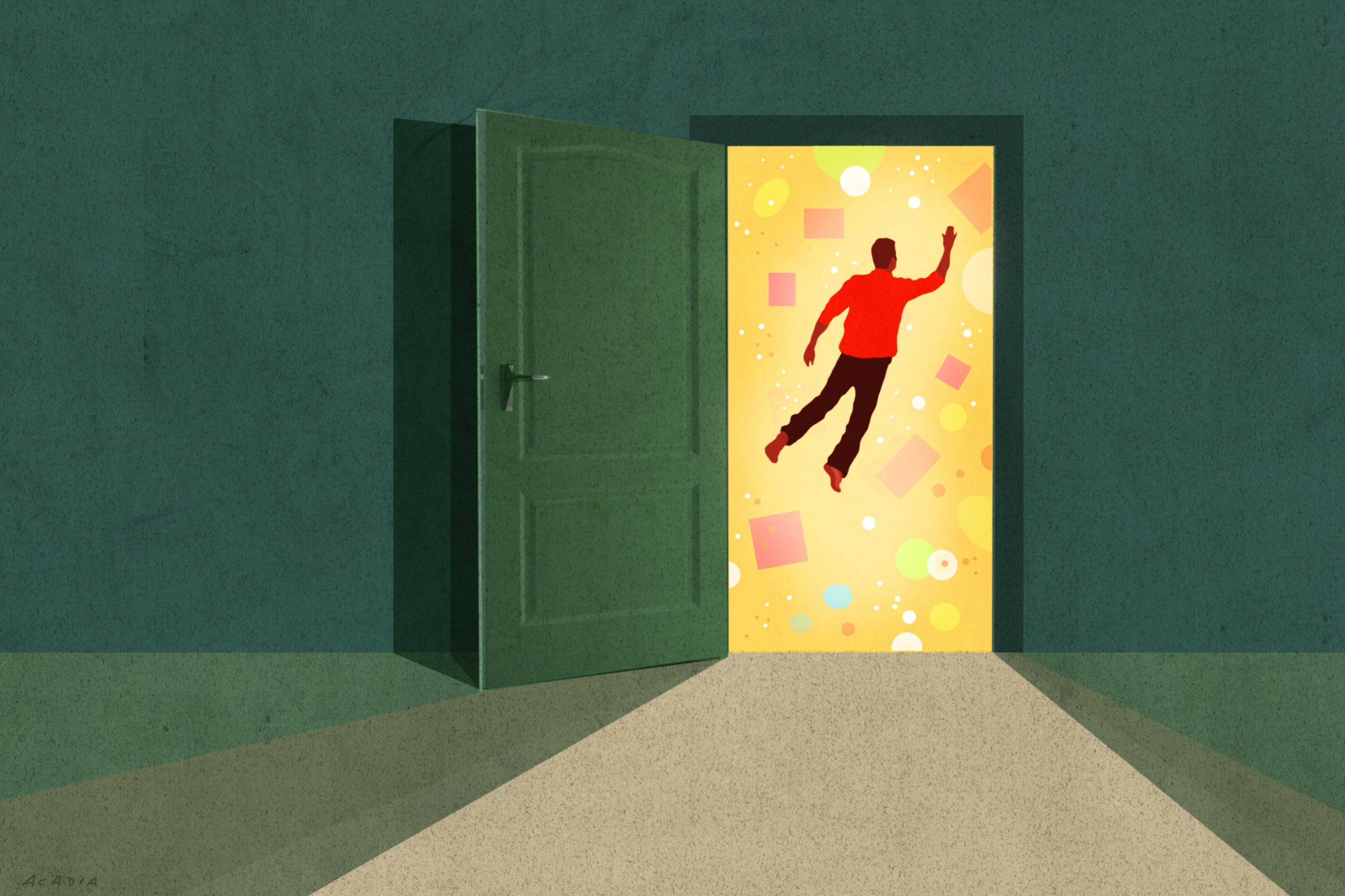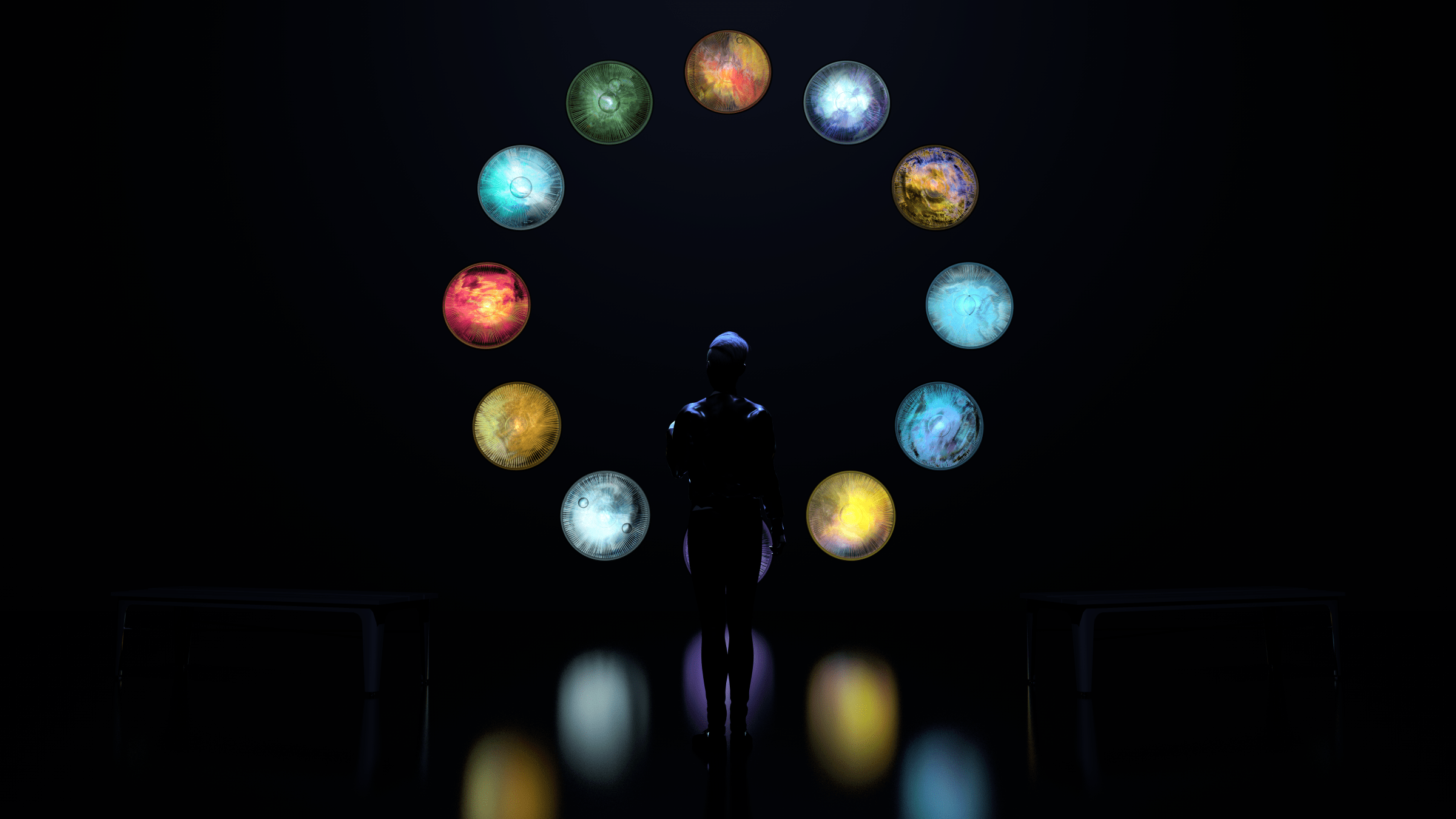
A version of this article was published in TIME’s newsletter Into the Metaverse. Subscribe for a weekly guide to the future of the Internet. You can find past issues of the newsletter here.
Last December, I downloaded a new-ish app called Clubhouse to learn more about a phenomenon that I had started to hear a lot about but barely understood: NFTs. On the app, I found a community of enthusiasts who believed that NFTs, or non-fungible tokens, would be a transformative force for culture, commerce and technology. Their community was passionate but small and insular; most people outside of their bubble assumed that their rise would be short-lived, if they had heard about NFTs at all.
What a difference a year makes. As we wind up 2021, NFTs were one of the year’s breakout stories, worming their way into nearly every aspect of pop culture, from music to sports to Marvel Entertainment. Interest around neighboring concepts like DeFi, DAOs and the metaverse likewise exploded as companies and investors across the world prepared themselves for a digital-first future.
To make sense of a wild year in the metaverse, I called up one of the foremost pioneers in the space: the artist and blockchain coder Rhea Myers. About eight years ago, long before NFT art hit the mainstream, Myers started creating blockchain-based art on early chains like Bitcoin and Dogecoin. She is now a senior smart contract developer at Dapper Labs, the company behind NBA TopShot and CryptoKitties. Like me, Myers was somewhat skeptical about the prospects of NFTs in 2021: “At the start of the year, I was quite down about the artistic engagement with, and use of, the blockchain space,” she says. “And everything just blew up a couple weeks later. It’s been so invigorating.”
I asked Myers to survey the landscape in 2021—and also to hand out some superlatives. Here are excerpts from our conversation.
Has there ever been a year like this in the world of crypto?
There’s a couple years it reminds me of: In 2017, when the Cryptopunks and Cryptokitties came out and we had the first curated exhibition of crypto art at Ethereal [the Ethereum-focused conference]. ERC-721 [a standard for tokens on the Ethereum blockchain] came out alongside the Cryptokitties effort, which is what every other token standard has to now situate itself in relation to.
Even earlier, in 2014, there was Nili Lerner’s NILIcoin, which was an early conceptual art project on the blockchain that was “selling” different company logo ideas. That was prefigurative of a lot that happened after. And the awesome Kevin McCoy came up with Monegraph, a blockchain registry of art. So two fantastically creative years.
But this year we saw the absolute mainstreaming of crypto. [We saw] it becoming the subject of fond jokes and sitcoms; stadiums being renamed; and the return of DAOs, decentralized autonomous organizations—the potential of those just feel so massive. There are just so many of them that are amazing, and I’m looking forward to seeing people really getting their heads around that technology and using it further.
The single most exciting moment in Web 3
The Sotheby’s Natively Digital auction. I’d be lying if I said it wasn’t amazing to get the cash. [Myers’ “Secret Artwork” sold for $63,000.] But It was amazing to get that serious, institutional critical attention and wonderful people coming in from the art curation and art theory spaces, starting to engage more seriously with blockchain stuff. It was so nice to be able to talk to people who understood me after I had been getting strange looks all these years.
Favorite NFT art project
The most recent one I’ve been interested in is Materia by the metaverse avatar artist LaTurbo Avedon. They’ve been engaged with cryptocurrency longer than I have, and their current project is just such a lovely long term engagement with the possibilities of the technology. It’s very much about the aesthetics of the space and of what you can do in virtual reality and on on-chain metaverses.

Most important technological development
It continues to be proof-of-stake, in terms of answering all of the moral panic about energy usage. Bitcoin and currently Ethereum use a system called proof-of-work, which was originally a scheme in which you run a complicated sum to prove that you’re not a spammer. Proof-of-work is deliberately inefficient: It’s designed to slow down attackers beyond the point where they can actually perform an attack.
Proof-of-stake says, rather than doing complicated puzzles using increasingly powerful hardware, let’s use the underlying technology of the blockchain, which is cryptographic signatures and the tokens that run the network. If you put some coins into a pool, you can be the person who approves blocks. And if you’re naughty, you lose your coins. So it goes from a sort-of worker elf system using lots and lots of work to a central naughty-and-nice list for producing blocks—to make it a horrible seasonal metaphor.
More from TIME
Favorite DAO
Friends With Benefits, a culture/collecting DAO. The sort-of ‘secret sauce’ to every successful project is its culture. And Friends with Benefits it’s just got a really good framing of, “Get involved, be excellent, shape the way things go.” It’s also finely tuned in the way they’ve used the staking and decision-making mechanisms.
Most worrisome trend
The moral panic directed at artists merely for using NFTs. There’s an emergent trend on social media of people feeling perfectly relaxed in saying, “Let’s bully NFT artists.” It’s based on outdated and poorly calculated information about chains other than the ones that artists are moving to.The focus should be on artists being leaders in the move to proof-of-stake, which has a minuscule fraction of the energy usage of proof-of-work, as well as better governance.
Favorite Web 3 thinker on social media
@Artnome, otherwise known as Jason Bailey. He’s got a background in art analytics and data. It’s really interesting to see someone who is used to viewing art as hard numbers come into a space like crypto, which started out as hard numbers, but people are trying to turn into something more touchy-feely and creative. I feel that’s a good perspective to have.
Biggest takeaway from the year
The creativity in the space is astonishing, and not just the artistic creativity but the people working on systems. Every complaint I’ve ever seen about the blockchain space either has an already-implemented, fine-tuned answer on a modern blockchain, or has several open source projects or start-ups working on something to make people’s lives easier.
At the start of the year, I was quite down about artistic engagement with and use of the space. And everything just blew up a couple weeks later. It’s been so invigorating. And it’s the same with the technology: seeing proof-of-stake systems become self-governing, seeing zero-knowledge proof schemes being used in games. [Researchers hope that “zero-knowledge proofs” will be the key to creating secure online identification.] I’m hoping that paradoxically, we can get both better identity systems to help artists establish that they are who they say they are; and better secret communication systems so that if you can establish who you say you are, you don’t have to establish it to anyone you don’t want to.
As with everything, it always starts with games. This is why games and art are so useful: they’re low stakes ways of experimenting with new tech. And this year, the creativity on every level is the highest I’ve ever seen.
Subscribe to Into the Metaverse for a weekly guide to the future of the Internet.
More Must-Reads from TIME
- Cybersecurity Experts Are Sounding the Alarm on DOGE
- Meet the 2025 Women of the Year
- The Harsh Truth About Disability Inclusion
- Why Do More Young Adults Have Cancer?
- Colman Domingo Leads With Radical Love
- How to Get Better at Doing Things Alone
- Michelle Zauner Stares Down the Darkness
Contact us at letters@time.com